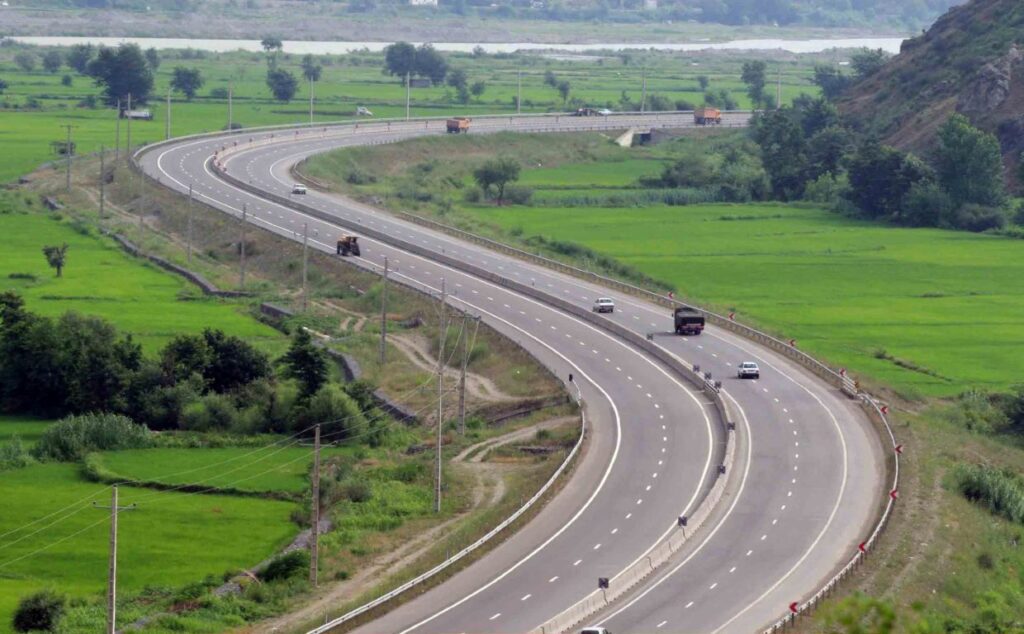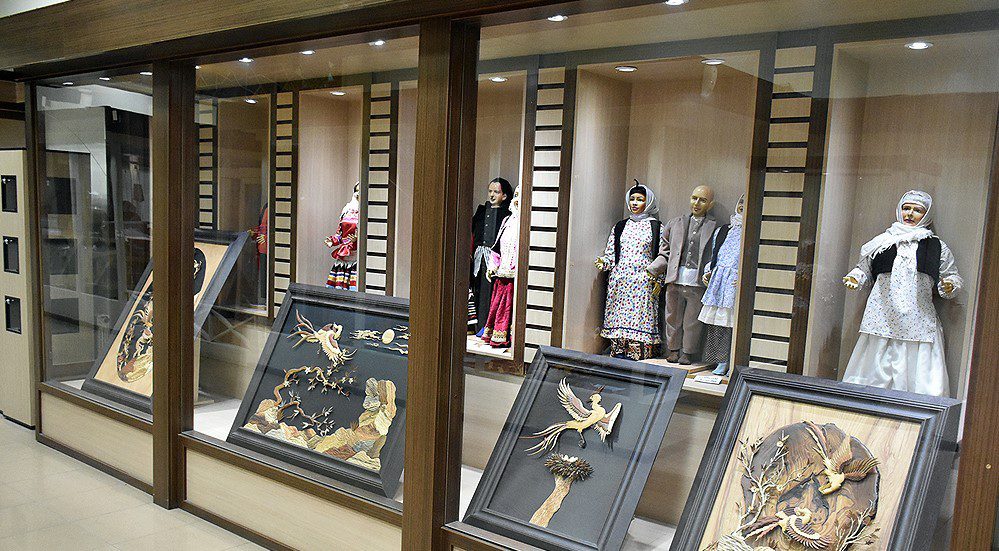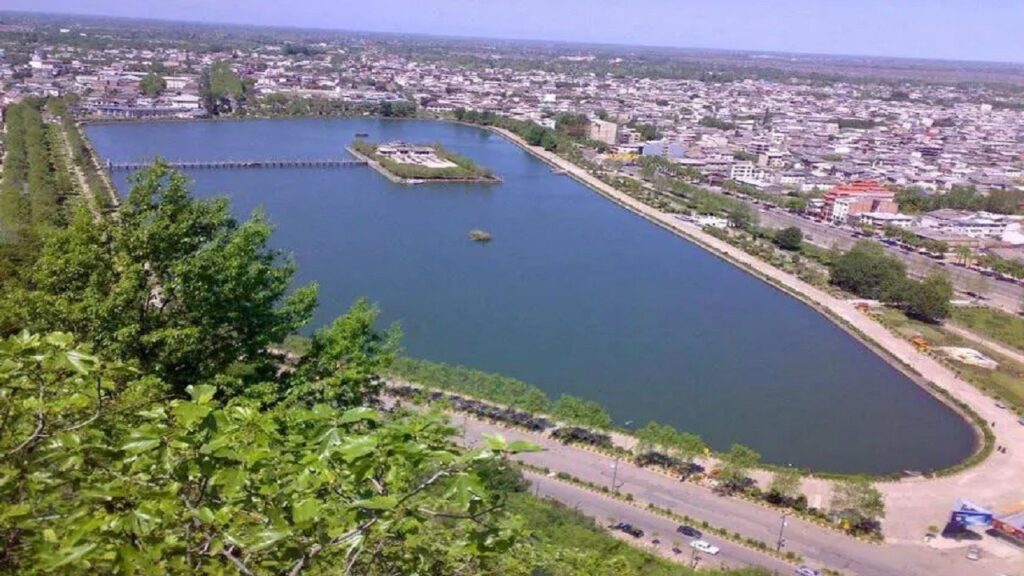Gilan Travel Guide: Top Sights & Tips + Photos
Exploring the Heart of Gilan: Top Tourist Attractions

Gilan, a region in Iran, offers a compelling blend of natural beauty and cultural richness. Rasht, the provincial capital, stands as a gateway to the lush landscapes and scenic wonders of the area. From the tranquil beaches of the Caspian Sea to the rugged slopes of the Alborz Mountains, Gilan serves as an ideal destination for travelers seeking both adventure and tranquility.
Visitors to Gilan are greeted with verdant forests and picturesque gardens, embodying the essence of a natural paradise. The diverse terrain invites a host of outdoor activities, from hiking through the dense foliage to relaxing by serene waterfalls and meandering rivers. This varied environment not only supports a wide array of wildlife but also provides the perfect backdrop for ecotourism.
The climate in Gilan remains mild throughout the year, which encourages exploration and appreciation of the outdoors. Every corner of the region presents an opportunity for unique experiences, whether it’s a leisurely stroll through green pastures or an exhilarating climb up mountainous trails.
Contents
Gilan Guide: Cities and Landscapes
Gilan is a province that lies in the northern part of Iran, stretching along the lush southern coast of the Caspian Sea. This region blends the fresh greenery of its landscapes with the azure of the sea, creating a natural canvas that entices travelers with its striking contrasts.
Rasht, the capital city, is the beating heart of Gilan and serves as a cultural and economic hub. Known for its dynamic atmosphere and culinary scene, it invites visitors to sample local dishes that are as rich in flavor as the city is in history.
Another key city, Lahijan, stands as a testament to Gilan’s agricultural heritage, with its tea plantations painting the rolling hills in various shades of green. Here, the scent of tea leaves mingles with the mountain air, offering a sensory delight to all who wander through.
Bandar Anzali, with its significant port, acts as a marine gateway to the province. The city’s maritime heritage is palpable in its bustling markets and the lively rhythms of daily life by the sea.
How to Get to Gilan?
Getting to Gilan, a picturesque region in northern Iran known for its lush landscapes and rich cultural heritage, is an adventure in itself. This guide outlines the best ways to travel to Gilan, ensuring a smooth and enjoyable journey.
Travel to Gilan by Personal Car

Starting from Tehran, your journey to Gilan by car would first direct you towards the northwest. You need to follow the Tehran–Karaj Highway and then proceed onto the Karaj-Qazvin Highway. Next, continue on the Qazvin-Rasht Highway until you reach the provincial capital of Gilan, which is Rasht.
Alternatively, you can opt for the Chalus Road, which will take you through cities such as Karaj, Chalus, Rudbar, Lahijan, and finally to Rasht. However, keep in mind that due to the longer distance, the Chalus Road might not be the best option for reaching Rasht.
Should you require a rest stop along the way, you can visit the Aftab Recreational Complex. Located nearly two kilometers before the entry to the Rasht Highway, this facility features an Iranian restaurant, fast food options, handicraft shops, the renowned Sohan Mohabbat brand, and various jewelry and craft stores.
Travel to Gilan by Train

If comfort and safety are your top priorities when traveling, taking the train to Gilan (Rasht) is an excellent choice. The recently constructed railway line from Tehran to Gilan is not only a testament to modern engineering but also offers a visually stunning journey. Picture yourself gliding through scenic landscapes, with views that blend historical richness with natural beauty.
However, it’s crucial to plan your train journey carefully. The schedule for trains running from Tehran to Gilan can vary, so it’s essential to check the latest timetable. For accurate and up-to-date information, I recommend visiting the OrientTrips train reservation page. This resource is invaluable for travelers, providing details on departure days and times, ticket availability, and other essential travel information.
For train travel from Tehran to Gilan, head to one of Tehran’s railway stations. Your first stop in Gilan will likely be the Rasht Railway Station. Upon arrival in Rasht, you can utilize the Rasht-Zanjan train route to explore other cities in Gilan like Lahijan, Rudbar, and Astara.
Travel to Gilan by Bus

To travel by bus from Tehran to Gilan (Rasht), you’ll need to head to either the West or Azadi bus terminals. Most buses bound for Gilan pass through the Qazvin province and use the Qazvin-Rasht road.
Traveling by bus from Tehran to Rasht is an efficient and enjoyable option, especially for those who value both comfort and the opportunity to experience the local scenery. The journey duration is quite reasonable, generally taking about 4 to 5 hours from departure to arrival at the destination terminal.
A significant advantage of bus travel is the planned short stop at one of the tourist complexes en route.
Travel to Gilan by Airplane

For air travel, you must go to Mehrabad Airport in Tehran. Sardar Jangal Airport in Rasht could be a good option for you. You can also consider using Lahijan and Babolsar airports for your journey to Gilan.
For hassle-free travel by train, bus, or airplane, it’s recommended to purchase your tickets online. With OrientTrips, you can effortlessly buy your tickets and ensure a smooth journey.
The Best Time to Visit Gilan
Situated along the enchanting Caspian Sea coastline, Gilan is a true gem among Iran’s provinces, offering a wealth of natural beauty, rich culture, and warm hospitality. This guide aims to help you determine the optimal time to experience Gilan’s unique allure, without resorting to clichéd words and phrases.
Spring: March to May
Gilan truly shines in spring. As the snow melts from the surrounding mountains, the landscape transforms into a canvas of vibrant colors. The lush greenery comes alive with wildflowers, and the air is filled with the sweet scent of blossoms. The temperature in spring is pleasantly mild, making it perfect for outdoor activities like hiking, birdwatching, and exploring Gilan’s picturesque villages.

Don’t miss the opportunity to explore the charming town of Rasht during this season. Known for its bustling bazaars and delectable cuisine, Rasht is a food lover’s paradise. Sample local dishes like Mirza Ghasemi and Baghali Polo for an unforgettable culinary experience.
Summer: June to August
Summer in Gilan offers a wealth of beauty and warmth. The Caspian Sea beckons with its inviting waters, and beachgoers can enjoy the sun and surf. This season is ideal for those looking to soak up the sun and indulge in water sports like swimming, jet-skiing, and sailing.
Head to the coastal town of Anzali to explore the Anzali Lagoon, a picturesque wetland teeming with wildlife. It’s also a great time to visit the Lahijan tea plantations and savor some of the finest Persian tea.

Autumn: September to November
Autumn in Gilan is a riot of colors as the foliage changes to stunning shades of red, orange, and yellow. The weather remains pleasant, and it’s an excellent time for hiking and exploring the province’s pristine forests. The Masouleh village, with its unique architecture and scenic views, is a must-visit during this season.
Additionally, autumn brings with it the rice harvest season. Witness the picturesque rice paddies, and if you’re lucky, you might even be able to participate in the traditional rice harvesting activities.
Winter: December to February
While Gilan’s winters are relatively mild compared to other parts of Iran, this season offers a different kind of charm. The snow-capped peaks of the Alborz Mountains provide a stunning backdrop to the coastal region. Winter is an ideal time for those who prefer a quieter, more serene atmosphere. Cozy up in a local tea house and savor Gilan’s famous seafood dishes.
Conclusion: Gilan, with its diverse seasons, offers something for every type of traveler. Whether you prefer the vibrant colors of spring, the sunny beaches of summer, the foliage of autumn, or the cozy winters, Gilan has it all. So, the best time to visit Gilan depends on your personal preferences and the experiences you seek. Plan your trip accordingly and get ready to discover the hidden charm of this Iranian paradise.
What to See in Gilan

Gilan captivates visitors with its stunning landscapes and historical gems. The stepped village of Masuleh offers a unique architectural experience, while Rasht, the provincial capital, delights with its vibrant bazaars and rich culinary heritage.
Nature lovers can marvel at the serene beauty of the Anzali Lagoon, a sanctuary for migratory birds and lotus flowers. Those seeking tranquility will find it in the untouched highlands of Deylaman, with its lush forests and hidden waterfalls.
For a glimpse into history, the Rudkhan Castle stands as a testament to Iran’s medieval past, offering breathtaking views from its majestic vantage points.
Below, you can see some of the most important tourism attractions in Gilan, each inviting you to explore the depth and beauty of this Iranian province.
Shahrdari Building
The Shahrdari building stands as Rasht‘s most iconic landmark, a beacon of the city’s heritage and architectural charm. Its colonial design, accented with a modest dome crowning a striking whitewashed tower, captures the essence of a rich historical narrative blended with Persian elements. By night, the landmark transforms as floodlights cast a majestic glow, highlighting its contours and creating a stunning visual spectacle.
Constructed with a keen eye for detail, the Shahrdari building tells the story of a bygone era, its presence in the cityscape a conversation between past and present. As the light fades and the edifice lights up, it becomes a photographer’s dream, each angle offering a new perspective, each shadow playing with the history it embodies.
Rudkhan Castle

Over 50 kilometers southwest of Rasht, in deep green and temperate rainforests of Gilan, well-preserved Rudkhan Castle or Qal’e Rudkhan in Farsi overlooks the lush woods with the streams cascading down the mountain. Some historians say the construction of the castle dates back to the Sasanian era, over 14 centuries ago. But it has been renovated around the 10th century during Seljuq dynasty.
The castle is built from stone and is famous for about 1000 stairs which get you to top of it, then prepare yourself for a 50-minute steep trekking and wear your hiking shoes. Climb up to have a great view of the fortress and its surroundings. There are vendors and shops along the way where you can have snack and else. If you want to feel the mysterious atmosphere of this intact ancient castle, visit it on a foggy day. You can also enjoy plenty of traditional food and drinks along the way.
Rasht Museum

The Rasht museum is small, but well presented in a 1930s house. Its mannequin displays illustrate Gilaki lifestyle, amid a selection of 3000-year-old terracotta rhyton drinking horns in the shape of bulls, rams and deer. Supping from such vessels supposedly endowed the drinker with the powers and skills of the animal depicted.
Rasht Grand Bazaar

Rasht Great Bazaar is the heart of the economy in Gilan Province and is located in the old texture of Rasht. Rasht Bazaar dates back to the Safavid era (1501–1736). Unlike similar traditional bazaars, it is not covered and has no ceiling domes or lightwells. The bazaar has maintained its traditional appearance throughout the years and is still a place where agricultural products, different fish, local foods and handicrafts are sold.

Anzali Lagoon
Anzali Lagoon is one of the most beautiful natural attractions of the northern Iranian province of Gilan. The lagoon, which is actually a wetland, divides the city of Bandar-e-Anzali into two parts and is considered to be one of the best locations for bird watching. That is to say, until 2012, around 187 bird species have been observed and recorded here.
It is also home to more than 80,000 wintering birds such as ducks, geese, swans, and coots. This astonishing wetland is surrounded by paddy fields and fish ponds and about two-thirds of the whole lagoon is covered by reeds.
Guilan Rural Heritage Museum
Located in Saravan- Shaft road, before police station, 18th km of Rasht- Qazvin freeway. About a four-hour walks are needed to visit all parts of this breathtakingly verdant museum in the forest and get to know all styles of cottage architecture through the rural history.

Showcasing traditions and customs give you the opportunity to explore the rural living environment and even take a picture local clothes. You can also buy handicrafts or even have a piece of hot flat bread. There are coffee shops and restaurants in which you can have a bite of Sour Kabob or Baqali-Qatoq. Many rural houses demonstrating the architectural style of the coastal or plain as well as mountainous areas of Guilan have been identified and subsequently, have been dismantled and reconstructed in the museum.
Visadar Waterfall

“Visadar Waterfall”, with 15 m high, is an impressive place located in a mountainous area and along a lush road. The surrounding rock cliffs are also attractive. Adventurous visitors can swim downstream from the waterfall.
Gisum Forest

Gisum is another tourist attraction and an area with a really beautiful nature in Gilan Province, including forest and beach. You will depart from forest to the beach through a really amazing road in the heart of the dense Gisum Forest.
Masal County
The city of Masal is a countryside in lush highlands of Gilan Province, it’s a relatively untouched spot in the nature of Northern Iran. It’s hard to express its beauty through words. There is a really picturesque village in this region which is called “Olasbelangah” with lovely wooden houses. It’s also possible for Visitors to stay in hotel or local homes there.
Lahijan Lake

“Lahijan Lake” is an artificial lake at the foot of Sheitan Kooh in the city of Lahijan. It’s a green area with pleasant weather which is a great place for walking and family picnics and it has a friendly atmosphere. The mountain across from the lake (Sheitan Kooh) offers a great view of the lake and the whole city. There are also traditional cafés and restaurants around the lake.
Asalem-Khalkhal Road
Asalem-Khalkhal is a dreamlike forest road and one of Iran most beautiful roads in the midst of foggy forests which connects Gilan Province to Ardabil Province. It is about 20 hours of hiking in forests and mountains, but it should be accompanied by an experienced guide. Visitors can find hostels on this way. Best time for going to this area is summer.
Subatan

Subatan Countryside is a dreamlike lush land amongst mountains. Although reaching to this hidden paradise is tough, it’s absolutely worth all the effort. There are lots of things to see and enjoy, including rural cottages and groups of horses. This place is also near to exquisite Neor Lake and Talesh Forests. It’s suggested not to go there in cold months.
Boujagh National Park
Boujagh is a wetland (national park) by Sefidrud river. It is home to over 200 species of birds that come from different parts of the world to this place every autumn. Besides birds, there are groups of horses and fishermen in their boats. Visitors could see many stunning views there, especially in spring.
Laton Waterfall

Laton is the highest waterfall in Iran (105 m high) near to the city of Astara. For reaching to this attractive waterfall, you should pass through beautiful dense forests in highlands which it takes you 4 hours.
Heyran Pass
Heyran pass which connects Astara to Ardabil is the most beautiful road in Iran. This road passes among mountains, forests and green lands and you will be enchanted by its exquisite scenery. The gondola lift is 1,500 meters long through beautiful landscapes of Alborz mountain range, there are really wonderful views of foggy lush highlands.
Chamkhaleh Beach
The best beach of Caspian Coastline is the sandy “Chamkhaleh Beach” which is a great and peaceful place for swimming or sun tanning. You will also enjoy watching wonderful view of the sea, and unforgettable sunrise by the sea from this lovely beach.
Masouleh

The artworks made by craftsmen of Gilan province are very specialized and largely various in types and materials.
The most well- known handicrafts of Gilan are; decorative and utilitarian articles in wood, wicker work, statues, pottery, ceramics, bamboo products, straw mats, silk weaves, carpet weaving include gelims and Jajim (fine carpets made of wool or cotton), felting and crochet. Different kinds of jam and sweets are also produced by local people such as Kolucheh which has nationwide fame.
Road More about Gilan
The Last Word
In summing up, Gilan mesmerizes with its verdant scenery and cultural richness, promising an engaging experience for every type of traveler. If the lively bazaars, tranquil natural beauty, or the locals’ heartwarming hospitality draw you in, your trip to Gilan is destined to be memorable. Take with you the savory tastes, captivating vistas, and melodious sounds, and let Gilan’s spirit gently pull you back to rediscover its endless wonders. With our Gilan Travel Guide, you’re not just touring a destination; you’re embarking on a vivid chapter of your travel narrative that will resonate for years to come.
Frequently Asked Questions
Gilan boasts a rich cultural heritage and stunning natural landscapes. Rasht, the provincial capital, offers the Rasht Bazaar and the Historical Museum. Masouleh, with its terraced architecture, and Lahijan, known for its tea plantations, are essential stops. Visit the Saravan Forest Park for a touch of nature.
Yes, you can effortlessly book your stay online. For a curated selection of accommodations, explore options on OrientTrips Hotels where you can find suitable lodging for your travel needs in Gilan.
Gilan’s cuisine is a delight for food lovers. Try the Mirza Ghassemi, grilled eggplant with tomato, or Baghali Ghatogh, beans with dill and eggs. Rice dishes like Fesenjan, a pomegranate walnut stew, are also not to be missed.
Gilan is enchanting all year round, but for pleasant weather, travel between April to October. This period avoids the heavy winter rains and takes advantage of the lush, green landscapes after the rainy season.
Gilan is famous for its handicrafts, including pottery, woodwork, and traditional Gilaki clothing. Don’t miss the local markets in Rasht for handmade baskets and the famous Gilan olive products.
Read More









